Eugène Delacroix in 10 Paintings: Poetry, Passion, and Power
Early 19th-century French art was a battle between cool, crisp, precisely observed Neoclassicism and Romanticism’s passion for emotion, drama,...
Catriona Miller 3 July 2024
This petite (9.5 x 12.5 cm, 3 3/4 x 4 in.) oil on canvas by J. M. W. Turner contains big things: big landscapes, big stories and big skies. It is an imagined scene from 1st century Rome: the departure of Ovid into his famous exile.
Joseph Mallord William Turner (1775–1851), successful while alive, travelled a lot. He visited Italy in 1819 and 1928, and Rome was the subject of many of his paintings.

Apart from contemporary scenes and veritable landscapes and seascapes, Turner also created historical, literary, and mythological paintings. In Ancient Italy—Ovid Banished From Rome a mix-match of temples, triumphal arches, and statuary from different periods create this rendition of 1st century Rome. The topic too, the story of Ovid’s banishment, is a blend of equal parts legend and historical fact.
Ovid Publius Naso (43 BCE–17/18 CE) wrote his own tragic story of his miserable exile in three books of poetry (Tristia, Ex Ponto, and Ibis). This sunset scene is a fantastic example of the revered use of yellow in Turner’s paintings. Although at the start of his critics laughed at him for putting yellow everywhere, it soon became a signature and masterful trademark.
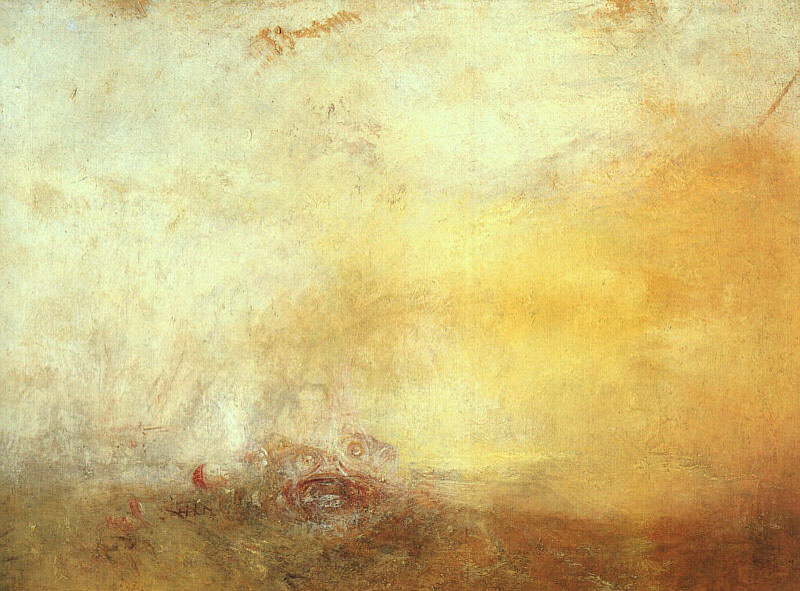
In Ovid’s exile poetry, a whole poem (Tristia 1.3) is about his emotional departure night from Rome. Despite Ovid describing night-time as the setting, Turner’s sunset captures an appropriate mood. With the hazy details and bright, setting sun, Turner’s painting feels like a fitting farewell to the Golden Age.
In the lower left of this painting we see a depiction of a tomb, bearing Ovid’s full name (Ovid Publius Naso), so, obviously, this is not a literal painting. Ovid is departing Rome not already dead! Also, the location of his burial is unknown, but it is somewhere on the Black Sea.
Ovid, who died after about a decade in exile, would often write about his own death and lament the fact he would not be buried in his beloved city of Rome. However, the legacy of Ovid is his literature—and the art it inspired—is better than any real tomb; perhaps Turner realized this.
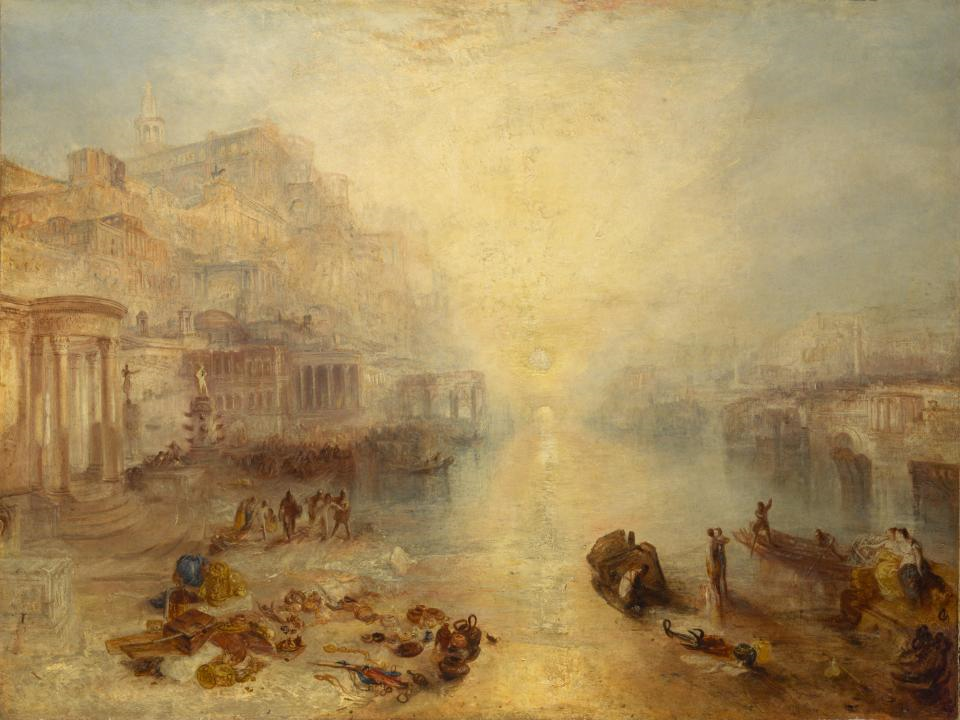
Turner’s depiction of Ovid’s departure is appropriately ambiguous. Which figure is Ovid? Is he even in the painting? With Ovid’s oeuvre of poetry that speaks through unreliable but knowable narrators, and the first person poetry from exile, “Who is Ovid,” is a very apt question.
There is also mystery around the cause of Ovid’s banishment by the Roman Emperor Augustus. The only clue is a mere three words: “carmen et error”—a song and a mistake. Which poem was so controversial that it designed exile? What did Ovid do that was so unforgivable?
Turner like Ovid, who wrote reams of poetry on the topic of love, can be described as a romantic. The art term Romanticism is the label for the period in Western art between 1780 and 1830. Emotions were on full display, in contrast to the traditional ideas of classical restraint. In British art, Turner is known for embracing Romanticism through his depictions of nature.
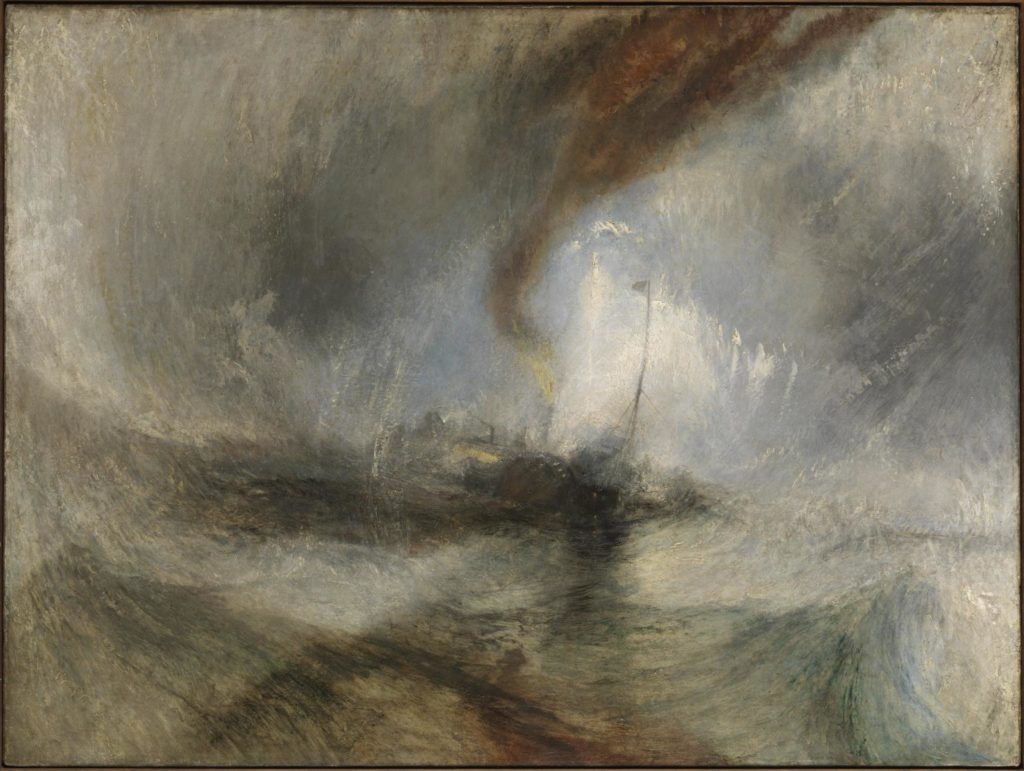
Ancient Italy—Ovid Banished From Rome certainly depicts emotion, look at the figures whose various poses display a range of feelings under categories of anguish, anger, and sadness.
As in many of Turner’s paintings Ancient Italy—Ovid Banished From Rome is centered on a massive sky and the water below (The river Tiber or the sea—you decide). Those of you who not skim-reading will realize that Thanet is most definitely not in Rome. Rather, it is in Kent. Turner was in love with the light in this area of the world.
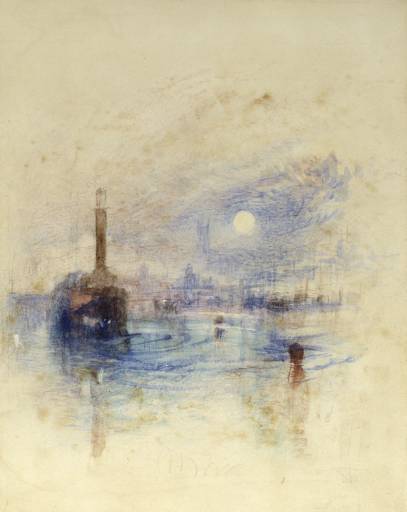
Where therefore, and in this very town of Margate, he lived, when he chose to be quit of London, and yet not to travel.
John Ruskin, an influential writer and art critic
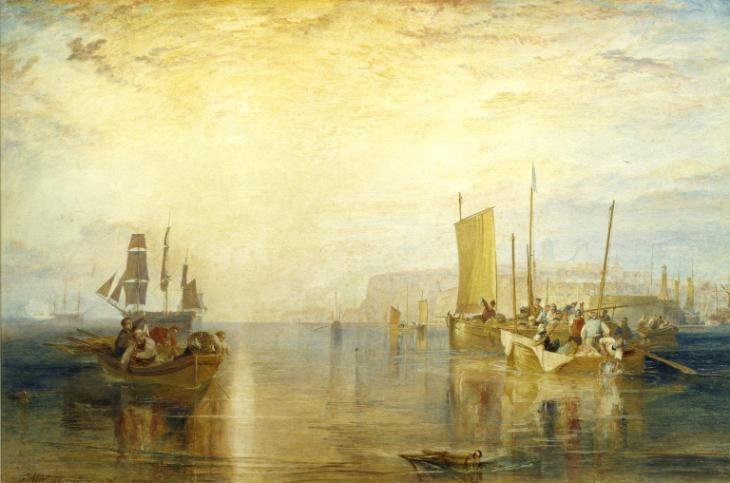
In particular, the sea and skies of Margate (where he went to school and where the new Turner Contemporary is located) were a great inspiration for him. As they are for living artist Tracey Emin who also came from the Kentish town.
While Turner and Emin escape the smog of London to the fresh air of Margate, Ovid longed for his beloved city from his exile on the coast of the Black Sea.
DailyArt Magazine needs your support. Every contribution, however big or small, is very valuable for our future. Thanks to it, we will be able to sustain and grow the Magazine. Thank you for your help!